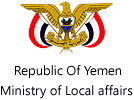
 http://www.english.hadhramaut.info
Transportation and roads in Hadhramaut
[The Source: - ]
http://www.english.hadhramaut.info
Transportation and roads in Hadhramaut
[The Source: - ]
 Transportation
:
Transportation
:
Transportation in hadhramaut is very easy in the cities and towns. There are buses running 20 hours a day, as well as taxies. These taxies take from place to another within the city, and also from city to city. However, in rural areas it is totally the opposite, people walk to their intended destinations, but places are near by, which is their only advantage.
The road network in Hadhramout is divided into strategic roads, which link more than one District, international linkage roads and international roads that pass through
hadhramaut. The length of these roads extends to 4,000 km and includes a coastal strip of 1,800 km linking up hadhramaaut with Saudi Arabia and Oman staring with Haradh in the north and extending to Houf at the Omani-hadharamauti border in the east. Work has been completed on the coastal highway that extends 503 km and includes Seyhout-Nashtoon
Air Transport
Hadhrammaut has become an active international aviation region. Hadhranmauts airports have been upgraded with equipment and enhanced technical capacities meeting international classifications, standards and requirements, mainly in terms of advanced infrastructure, security and safety of travelers. The establishment of airports were also expanded and modernized including Al-Rayyan Airport, Seyoun Airport, Socotra Island Airport was also introduced into full services in June 1999 ending isolation of the islands and linking up its population with the motherland.
Land Transport
Yemen's modern land transport system has seen continued expansion in terms of
infrastructure and a change in new philosophy that evolved out of the economic
reform program. The reform program has contributed to liberalizing land transport
activities, allowing private sector companies to compete in the sector. The move has
resulted in lower passenger tariffs. There are now five private companies engaged in
freight transport and 15 private companies engaged in land passenger transportation.
Measures for privatizing the General Corporation for Land Transport should also
contribute to better quality and a more efficient land transport sector. Bylaws that
regulate passenger and cargo transport are being drafted and discussed.
Sea Transport
Yemen's coastline extends 2,500 kilometers. Seaports are widespread along the
coastal strip of the country. Sea transport in Yemen is a major link connecting the
country with international shipping lines that stimulate world trade and investment.
Sea ports are means for transporting Yemen's imports of commodities and raw
materials and exports of agricultural and manufactured products. The government has
doubled investment in the sector in excess of YR 48 billion by 2004. The investment
helped improve and expand capacities in the various ports., the government built a Container Port north of the Al-Mu’alla Port, of which the cost of the first stage reached YR 36 billion.
|